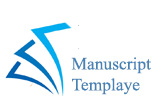Kadar BOD dan COD Air Lindi dengan Perlakuan Fitoremidiasi Tanaman Teratai (Nymphaea Sp.) dan Apu-Apu (Pistia stratiotes L.) (Studi Kasus TPA Jetis Purworejo)
Abstract
Phytoremediation is one of alternative methods to remove pollutant in leachate. Leachate from Jetis Landfill was applied in this research. The purposes of the study were to analysis the change of BOD and COD concentration using Nymphaea sp. and Pistia stratiotes L. and to observe plants condition.
The research was carried out by laboratory experiment. Tools and materials used in this research were reactors with 50 L capacity, 455 L of leachate, 12 pcs of Nymphaea sp., 120 pcs of Pistia stratiotes L., 12 kg of palm fiber, and 120 kg of gravel. There were 25 reactors consisted of 1 control reactor, 12 reactors with 3 day of resident time (H3) and 12 reactors with 7 days of resident time (H7). Each of reactors is filled with 15-20 L of leachate which consisted of only plant reactors (T or A) and palm fiber, gravel and plant reactors (TIK or AIK). Each reactor was tested the BOD and COD. Plant conditions were observed daily. Changes of BOD and COD levels for each treatment presented in graphs then analysed descriptively.
The results showed that BOD and COD levels of each reactor were lower than control. The difference was relatively small. The AIK-H7 reactor was the most optimum in reducing BOD levels, although the percentage of reduction only 24.11%. In TIK-H7, the COD level was 576 mg/L, the reduction percentage reached 23,6%. The plant observation, found on the 3rd day of treatment, the leaves of the Nymphaea sp. have begun to decay, while the leaves of the Pistia stratiotes L. have started to dry and turn yellow. On the 7th day the whole plant was died. Phytoremediation with Nymphaea sp. and Pistia stratiotes L. in this research was not maximum to remove BOD and COD in leachate of Jetis Landfill.
Keywords
Full Text:
PDFReferences
Agnes, A. R., R. Azizah. 2005. Perbedaan Kadar BOD, COD, TSS, dan MPN Coliform Pada Air Limbah Sebelum dan Sesudah Pengolahan di RSUD Nganjuk. Jurnal Kesehatan Lingkungan.Vol 2 No 1. Hal: 97-110.
Budiman, C. 2005. Pengantar Kesehatan Lingkungan. Penerbit Buku Kedoteran EGC. Jakarta.
Dewi, Y.S. dan Rahmawati, A. 2015. Efektivitas Tanaman Teratai (Nymphaea sp.) dalam Menguraikan Limbah Cair Domestik Berdasarkan Lama Waktu Perlakuan. Jurnal Ilmiah Universitas Satya Negara Indonesia. Vol 8 No 2 Desember 2015. Hal: 42-47.
Fajariyah, C. dan Mangkoedihardjo, S. 2017. Kajian Literatur Pengolahan Lindi Tempat Pemrosesan Akhir Sampah dengan Teknik Lahan Basah menggunakan Tumbuhan Air. Jurnal Teknik ITS. Vol 6 No 2. Hal: D-190-D195.
Herlambang, P. dan Hendriyanto, O. 2015. Fitoremediasi Limbah Deterjen Menggunakan Kayu Apu (Pistia Stratiotes L.) dan Genjer (Limnocharis flava L.). Jurnal Ilmiah Teknik Lingkungan. Vol 7 No 2. Hal: 101-114.
Hermawati, E., Wiryanto, dan Solichatun. 2005. Fitoremediasi Limbah Detergen Menggunakan Kayu Apu (Pistia stratiotes L.) dan Genjer (Limnocharis flava L.). Biosmart. Vol 2 No. 2. Jurusan Biologi FMIPA UNS Surakarta. Hal: 115-124.
Hidayati, N. 2005. Fitoremediasi dan Potensi Tumbuhan Fitoakumulator. Jurnal Hayati. Vol 12 No 1. Hal: 35-40.
Irwanto, R. dan Barorah, F. 2017. Kemampuan Tumbuhan Akuatik Salvinia molesta dan Pistia stratiotes sebagai Fitoremediator Logam Berat Tembaga. Prosiding Seminar Nasional Masyarakat Biodiversitas Indonesia. Vol 3 No 3. Hal:138-145.
Kelly, E.B. 1997. Ground Water Polution: Phytoremediation. http:// www.cee.vt.edu/program_areas / enviromental/ teach/gwprimer /phyto/phyto/htm. Diakses tanggal 5 Oktober 2018.
Machdar, I. 2008. Dasar-Dasar Sintesis Proses. Penerbit Universitas Syiah Kuala Banda Aceh.
Marianto, L.A. 2001. Merawat dan Menata Tanaman Air. Agro Media Pustaka. Jakarta.
Metcalf and Eddy. 1991. Wastewater Engineering. Mc Graw Hill. New York.
Metting, B. 1996. Soil Microbial Ecology. Marcel and Dekker. New York.
Nindra, D.Y. dan Hartini, E. 2015. Efektivitas tanaman teratai (Nympahea firecrest) dan eceng gondok (Eichhornia crassipes) dalam menurunkan kadar BOD (Biochemical Oxygen Demand) pada limbah cair industri tahu. VISIKES: Jurnal Kesehatan Masyarakat. Vol 14 No 2. Hal: 123-130.
Notodarmojo, S. 2005. Pencemaran Tanah dan Air Tanah. Penerbit. ITB. Bandung.
Safitri, R. 2009. Phytoremediasi Greywater dengan Tanaman Kayu Apu (Pistia stratiotes) dan Tanaman Kiambang (Salvinia molesta) serta Pemanfaatannya untuk Tanaman Selada (Lactuca sativa) secara Hidroponik. Skripsi Program Studi Ilmu Tanah Fakultas Pertanian IPB. Bogor.
Sari, E. dan Sari, D.Y. 2018. Efektivitas Media Penyaring dan Kayu Apu (Pistia stratiotes L) dalam fitoremediasi Air Lindi (Leachate). Prosiding Seminar Nasional Pendidikan Biologi. ISBN: 978-602-61265-2-8.
Sembiring, E.T.J. dan Muntalif, B.S. 2011. Optimasi Efisiensi Pengolahan Lindi dengan Menggunakan Constructed Wetland. Jurnal Teknik Lingkungan. Vol 17 No 2. Hal: 1-10.
Soemirat, J.1996. Kesehatan Lingkungan. Gadjah Mada University Press.Yogyakarta.
Usman, S. dan Santosa, I. 2014. Pengolahan Air Limbah Sampah (Lindi) dari Tempat Pembuangan Akhir Sampah (TPA) Menggunakan Metoda Constructed Wetland. Jurnal Kesehatan. Vol V No 2. Hal: 98-108.
Padmaningrum, R.T., Aminatun, T., dan Yuliati. 2014. Pengaruh Biomassa Melati Air (Echinodorus paleafolius) dan Teratai (Nymphaea firecrest) terhadap Kadar Fosfat, BOD, COD, TSS, dan Derajat Keasaman Limbah Cair Laundry. Jurnal Penelitian Saintek. Vol 19 No 2. Hal: 65-74.
Peraturan Menteri Lingkungan Hidup dan Kehutanan Republik Indonesia Nomor P.59/Menlhk/Setjen/Kum.1/7/2016 tentang Baku Mutu Lindi bagi Usaha dan/atau Kegiatan Tempat Pemrosesan Akhir Sampah.
Rossiana, N., Supriatin, T., dan Dhahiyat, Y. 2007. Fitoremediasi Limbah Cair dengan Eceng Gondok (Eichornia crassipes (Mart) Solm) dan Limbah Padat Industri Minyak Bumi dengan Sengon (Paraserianthes falcataria L. Nielsen) Bermikoriza. Laporan Penelitian Fakultas MIPA Universitas Padjajaran. Bandung.
Tchobanoglous, G. 1993. Integrated Solid Waste Management. McGraw-Hill, Inc. New York.
Tjitrosoepomo, G. 2000. Taksonomi Tumbuhan (Spermatophyta). Gadjah Mada University Press. Yogyakarta.
DOI: https://doi.org/10.31315/jmel.v2i2.2389
DOI (PDF): https://doi.org/10.31315/jmel.v2i2.2389.g2240
Refbacks
- There are currently no refbacks.
This Journal indexed to :

This work is licensed under a Creative Commons Attribution-ShareAlike 4.0 International License. Statistik Jurnal









